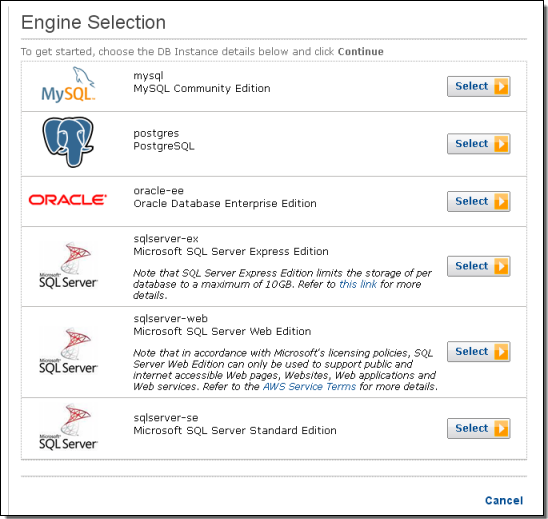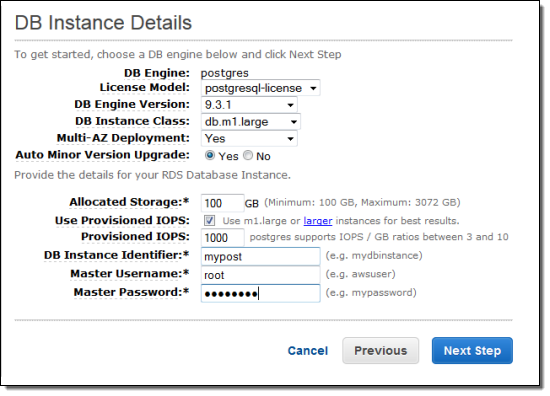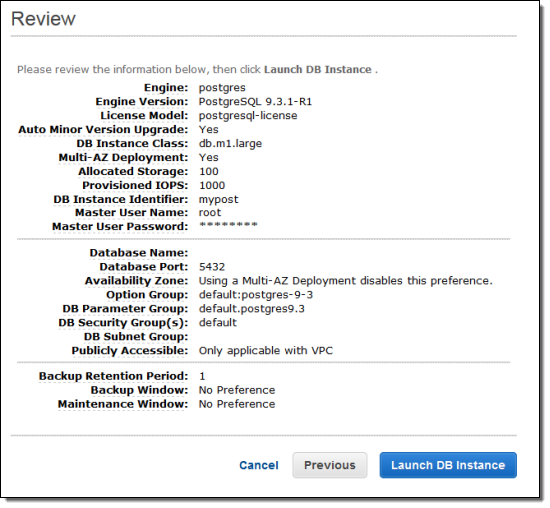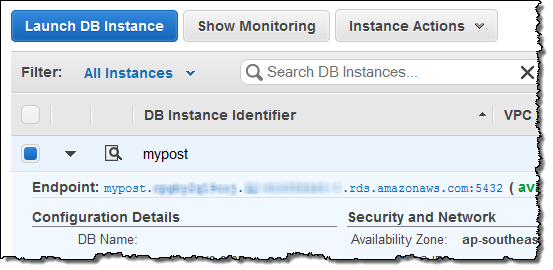AWS News Blog
Amazon RDS for PostgreSQL – Now Available
|
|
 The Amazon Relational Database Service (RDS among friends) launched in 2009 with support for MySQL. We added Oracle Database in 2011 and Windows SQL Server in 2012.
The Amazon Relational Database Service (RDS among friends) launched in 2009 with support for MySQL. We added Oracle Database in 2011 and Windows SQL Server in 2012.
Today we are adding support for PostgreSQL. After personally fielding hundreds requests for this database engine over the last couple of years, I am more than happy to be making this announcement! Some of the people that I have talked to want to move their existing applications over to RDS. Others want to build new applications that take advantage of the data compression, ACID compliance, spatial data (via PostGIS), or fulltext indexing that PostgreSQL has to offer.
Over the past few years, PostgreSQL has become the preferred open source relational database for many enterprise developers and start-ups, powering leading geospatial and mobile applications.
All of the Goodies
This is a full-featured release, with support for Multi-AZ deployments, Provisioned IOPS, the Virtual Private Cloud (VPC), automated backups, and point-in-time recovery. If you are new to AWS and/or RDS, here’s what that means:
Multi-AZ Deployments provide enhanced durability and availability by creating primary and secondary database instances in distinct AWS Availability Zones, with synchronous data replication from primary to secondary and automatic failover.
Provisioned IOPS allow you to specify the desired performance of the database, with a maximum value of 30,000 IOPS (Input/Output Operations Per Second).
Virtual Private Cloud support gives you the power to launch RDS database instances in an isolated section of the AWS cloud using a virtual network that you define.
Automated Backups are scheduled to run on a daily basis at a time you designate, with automatic expiration of old backups in 1 to 35 days (your choice). Backups are durably stored in Amazon S3.
Point-in-time Recovery starts with an existing database instance and creates a new instance, representing the original instance as it existed at a specified time.
Cross-Region Snapshot Copy lets you copy your database snapshots across AWS Regions with a few clicks in the AWS Management Console. This allows you to take advantage of multiple AWS Regions for geographical expansion, data center migration, and disaster recovery.
We are launching with support for version 9.3.1 of PostgreSQL, with plans to support new versions as they become available. We also support the PostGIS spatial database extender the PL/Perl, PL/Tcl, and PL/pgSQL query languages, full text search dictionaries, and advanced data types such as Hstore and JSON at launch time. You can learn more about the full set of extensions by checking the rds.extensions parameter or the Amazon RDS User Guide.
When using Amazon RDS for PostgreSQL, you can take advantage of the products and services of a variety of AWS partners. These include geospatial applications from ESRI and CartoDB that leverage PostGIS. You can also use Business Intelligence products and services from Tableau and Jaspersoft to visualize and interact with your PostgreSQL data and leverage the power of cloud while taking advantage of the benefits of Amazon RDS. Check out our testimonials page to learn more.
Getting Started
You can launch a PostgreSQL instance from the AWS Management Console. Click the Launch DB Instance button and select the PostgreSQL engine:

Select the instance size and fill in the other details. Note that you can create DB instances with up to 3 TB of storage and 30,000 Provisioned IOPS:

Confirm your intent to create a database instance and click the Launch DB Instance button:

After a few minutes the database instance will be up and running. You can then copy the Endpoint string from the console, plug it in to your code, and start running queries:

Amazon RDS for PostgreSQL is available now in all AWS Regions and you can start using it today!
— Jeff;
